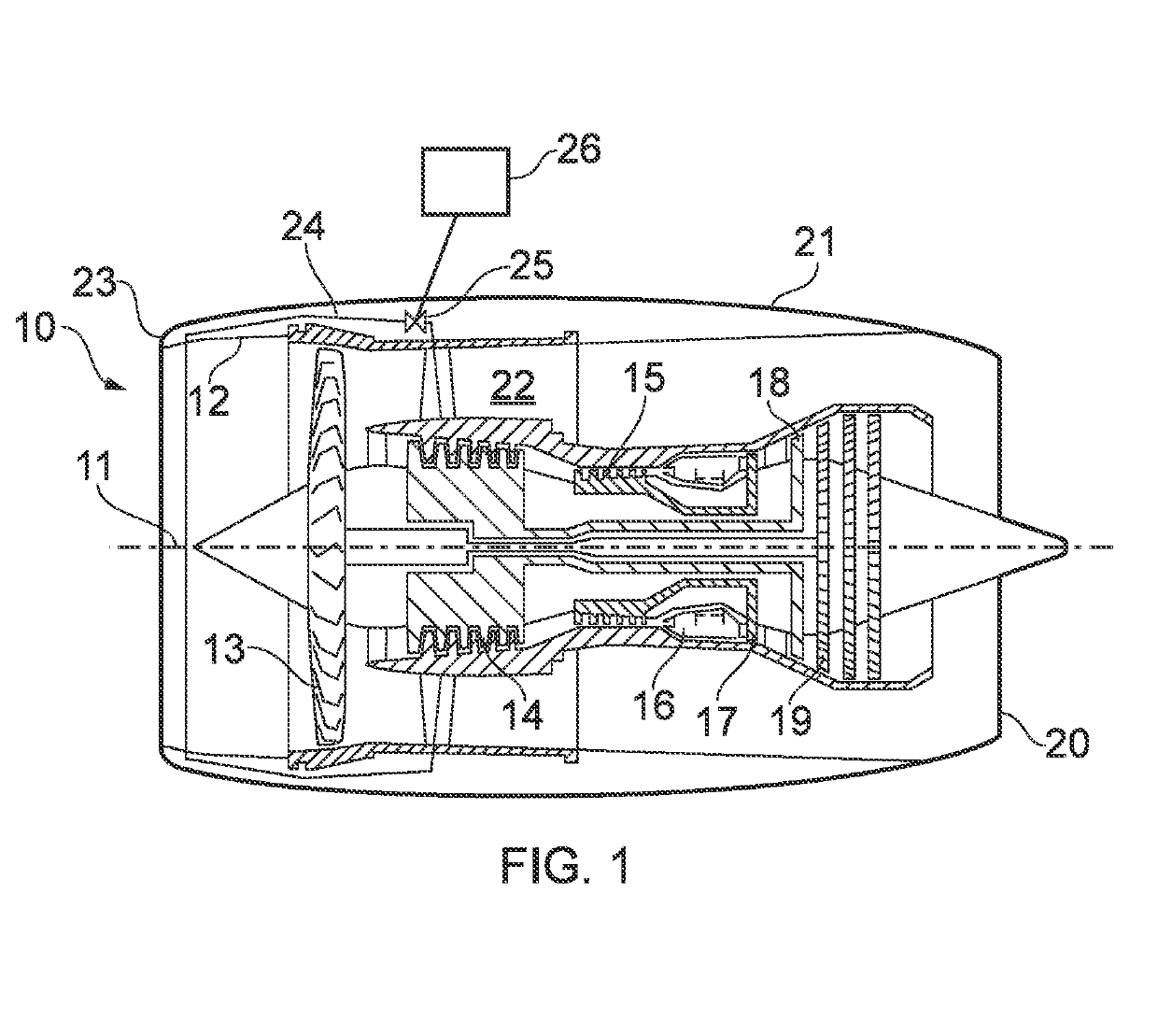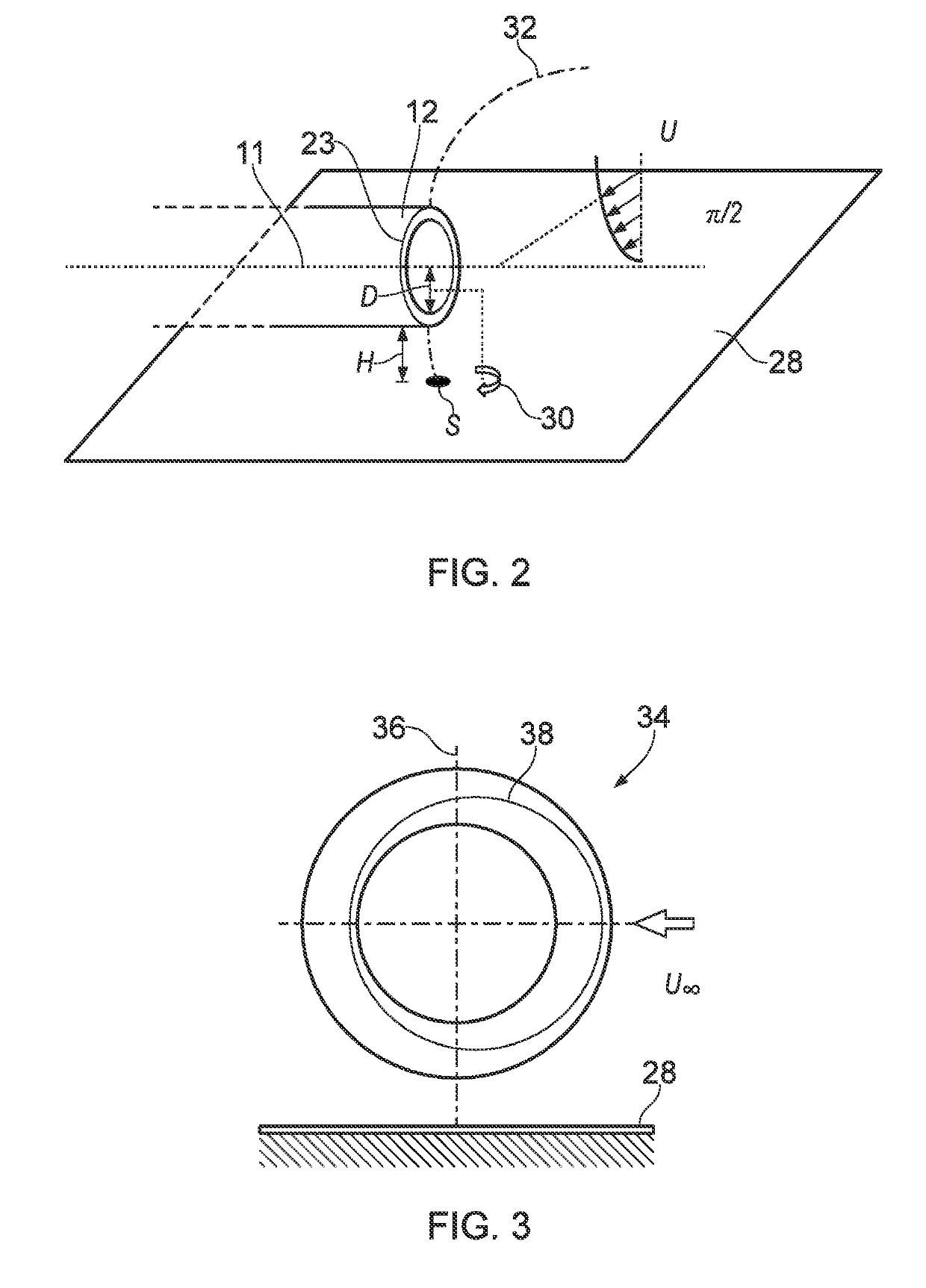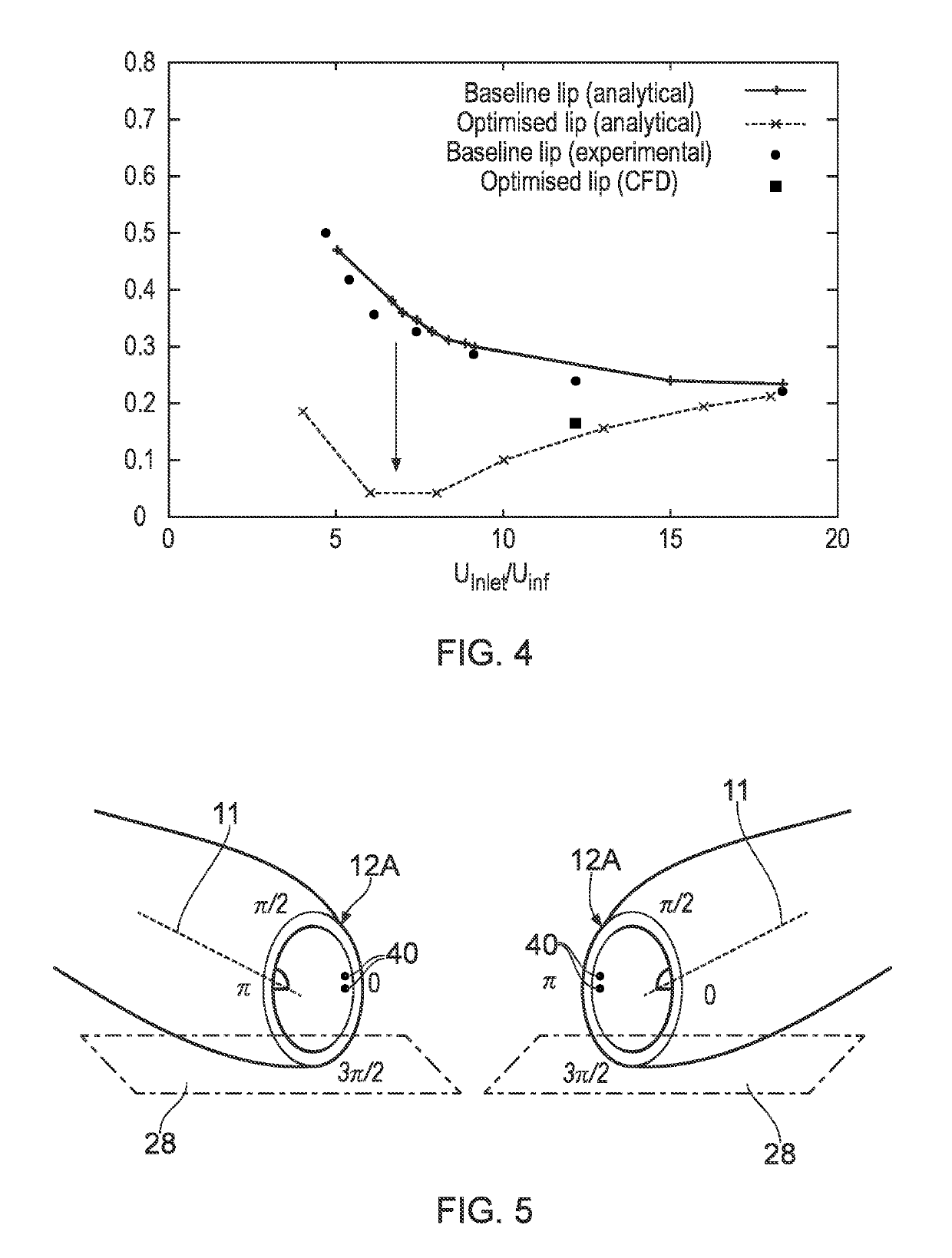Gas turbine engine vortex suppressor
a technology of gas turbine engines and suppressors, which is applied in the field of aircraft engines, can solve the problems of undesirable ground vortex formation, deterioration of fan flow quality, and difficulty in establishing ground vortex of this kind, and achieve the effect of suppressing the vortex flow
- Summary
- Abstract
- Description
- Claims
- Application Information
AI Technical Summary
Benefits of technology
Problems solved by technology
Method used
Image
Examples
Embodiment Construction
[0048]Unlike the above-mentioned prior art systems that require use of an accessory external of the engine to achieve this aim, the present disclosure indicates that this can be achieved using a different, and more pragmatic, mechanism. The mechanism identified by the inventors involves modifying the fluid dynamic load of the intake flow on the engine intake lip.
[0049]With reference to FIG. 1, a gas turbine engine is generally indicated at 10, having a principal and rotational axis 11. The engine 10 comprises, in axial flow series, an air intake 12, a propulsive fan 13, an intermediate pressure compressor 14, a high-pressure compressor 15, combustion equipment 16, a high-pressure turbine 17, an intermediate pressure turbine 18, a low-pressure turbine 19 and an exhaust nozzle 20. A nacelle 21 generally surrounds the engine 10 and defines both the intake 12 and the exhaust nozzle 20.
[0050]The gas turbine engine 10 works in the conventional manner so that a working gas such as air ente...
PUM
 Login to View More
Login to View More Abstract
Description
Claims
Application Information
 Login to View More
Login to View More - R&D
- Intellectual Property
- Life Sciences
- Materials
- Tech Scout
- Unparalleled Data Quality
- Higher Quality Content
- 60% Fewer Hallucinations
Browse by: Latest US Patents, China's latest patents, Technical Efficacy Thesaurus, Application Domain, Technology Topic, Popular Technical Reports.
© 2025 PatSnap. All rights reserved.Legal|Privacy policy|Modern Slavery Act Transparency Statement|Sitemap|About US| Contact US: help@patsnap.com



